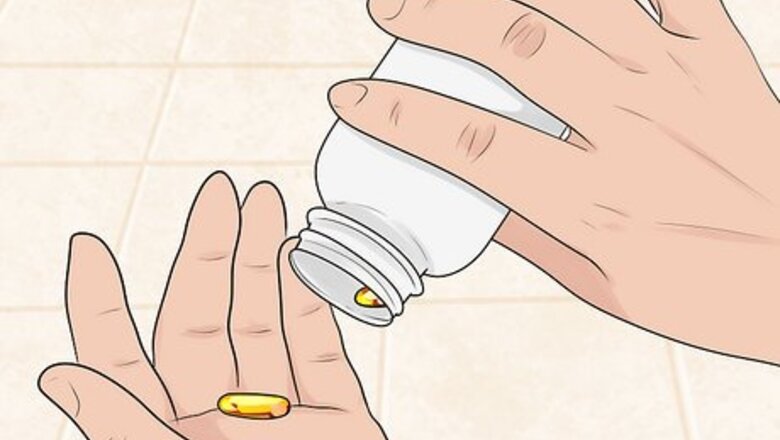
views
- To prevent gray hair, ensure you get enough B12, vitamin D, and antioxidants by eating plenty of salmon, beef, olive oil, and vegetables.
- Stay as stress-free as possible to keep your hair from falling out; otherwise, your hair may lose pigment and turn gray when it grows back.
- If you’re a smoker and want to keep your hair pigmented, quit smoking. Excessive tobacco use is scientifically linked to premature hair graying.
Lifestyle Changes to Prevent Gray Hair
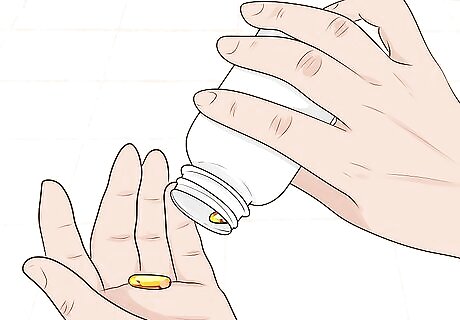
Make sure you get enough vitamins D and B12 every day. Vitamins are essential for hair and skin health and can slow the graying process. If you have nutritional deficiencies, it can affect how pigmented your hair is. Eating plenty of dairy, beef, salmon, eggs, fruits, and vegetables can keep your hair healthy, strong, and pigmented. Consider taking multivitamins if you’re concerned about going gray too early, especially if you aren't consuming enough beneficial vitamins and micronutrients through your diet. Vegans are more likely to have a B12 deficiency because they don’t consume animal products. If you’re vegan, talk to your doctor about adding a B12 supplement to your routine.
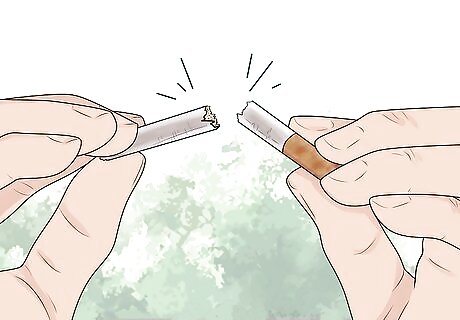
Stop smoking to prevent premature graying. Believe it or not, tobacco usage is one of the leading causes of premature gray hair. Studies show that smokers are 2.5 times more likely to develop premature hair graying than those who don’t smoke. Along with premature graying, smoking can make hair look dull and brittle, causing irreversible damage over time. Seek help from loved ones or a therapist when you quit smoking—you don’t have to go through this alone.
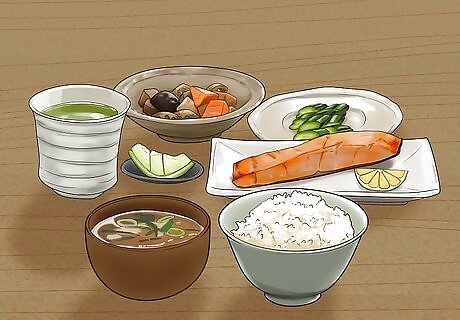
Add more antioxidant-rich foods to your diet. Similarly to vitamins, not eating enough antioxidants daily can help your hair age faster due to stress in the body (also known as oxidative stress). Prevent this by eating plenty of fresh fruits, vegetables, green teas, olive oil, and fish. While these foods and beverages can’t completely prevent your hair from graying, they can help slow the process. Basically, high antioxidant levels balance your body, helping your body produce more melanin (the natural pigment that colors your hair). Try swapping your morning cup of coffee with green tea. Add a fish meal to your rotating dinner menu. Use olive oil instead of vegetable oil when making stir fries, rice dishes, or roasting vegetables.
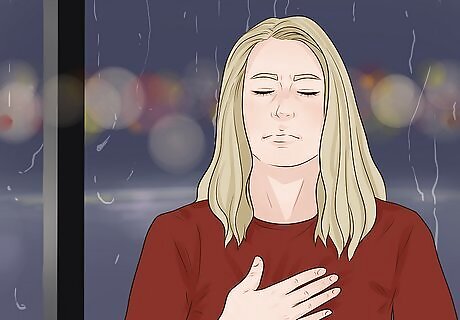
Do your best to avoid stress when you can. There are conflicting findings on whether or not real-life stressors impact your hair’s health. However, experts say it’s best to lean on the side of caution and avoid stress. Stress won’t automatically give you gray hair, but being constantly worried or anxious can cause your hair to fall out, resulting in lighter hair growing back in. Start meditating to learn how to control your stress in everyday situations. Try saying “no” to more things to relieve stress if your schedule is packed. Schedule some “me time” into your week to give yourself time to relax and unwind. Talk to a therapist if you experience extreme stress or anxiety, as they’ll help you cope with daily worries.

Protect your hair from the sun and air pollutants. Keeping your hair out of harsh elements can help it stay pigmented longer; the more environmental stressors your hair is around, the weaker the hair follicles become. Limit your exposure to the sun by wearing a hat or hair sunscreen on sunny days. Use a scarf or head wrap to conceal your hair on high air-pollution days. Check the weather forecast before you leave the house. For instance, if the air quality index (AQI) is above 100, pollutants are high.

See your doctor regularly if you have an autoimmune disorder. Those with autoimmune conditions like vitiligo, thyroid disease, and alopecia areata are more prone to premature hair graying. Because of this, it’s important to stay up to date with your doctor’s appointments if you have one of these conditions. Regular bloodwork and active treatment can help your hair stay pigmented for as long as possible.
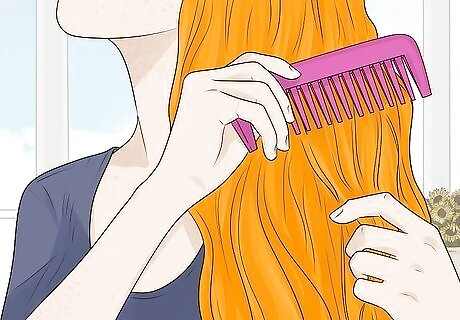
Prevent hair loss by taking good care of your hair. While unhealthy hair doesn’t necessarily turn gray sooner, it is more likely to thin. When new hair grows as you age, it has less pigment. So, one of the best ways to help prevent gray hair is to keep your hair healthy. Here are some tips: Avoid chemically dyeing or bleaching your hair as much as possible. Stay away from hair extensions, as they can pull and tug at your hair follicles. Do your best to avoid using heat on your hair. Opt to air dry your hair rather than using a hair dryer, and follow no-heat curling methods to avoid a curling wand. Use a heat protectant to protect your hair if you do style it with heat. Avoid brushing your hair while it’s wet. Instead, use a wide tooth comb to gently detangle it.
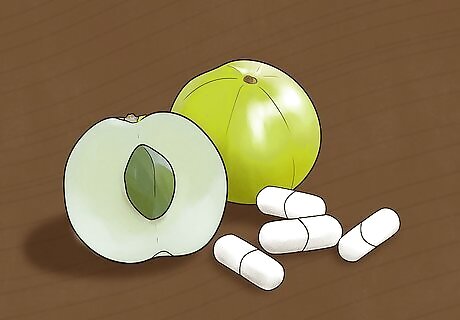
Keep your hair vibrant with natural supplements. While there are no conclusive studies to show that natural supplements can prevent gray hair, some Indian cultures swear by these remedies. Always consult with your doctor before adding an oral natural remedy to your diet to ensure it’s a healthy choice for you. Here are some popular natural preventative supplements you can try: Blackstrap molasses Black sesame Chlorophyll supplements Nettle leaf Seaweed Amla

Massage your scalp with egg oil to prevent graying and hair loss. Egg oil contains antioxidant xanthophylls, like lutein and zeaxanthin, which can help stop premature hair graying. Make an egg oil, massage a coin-sized amount into your scalp, and leave it on overnight 2 times a week. Although there isn’t scientific proof that this natural homemade remedy works, some swear by it. Use more oil if you have thicker or longer hair. If every strand on your scalp is saturated, you’ve used enough. Rinse and wash the egg oil mask out of your hair in the morning, styling it as usual once it’s dry. Cover your bed with a plastic sheet or wrap your hair in a bonnet to keep your sheets clean.
Debunking Gray Hair Myths
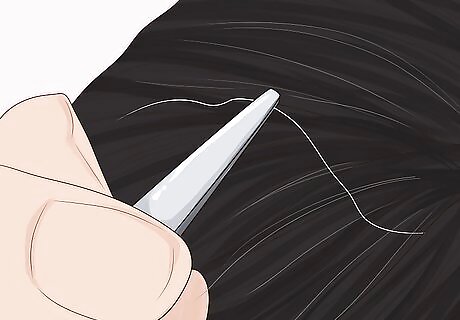
Plucking gray hairs won’t cause more grays to grow. Contrary to popular belief, if you pull out gray hair, more won’t grow back in its place. This is an old wives’ tale with no factual evidence behind it. If you have gray hair that annoys you, feel free to pluck it out without worrying that you’ll cause a mini explosion of grays. Keep in mind that plucking grays isn’t a long-term solution. A pulled-out gray hair will still grow back as gray, as the follicle itself hasn’t changed.
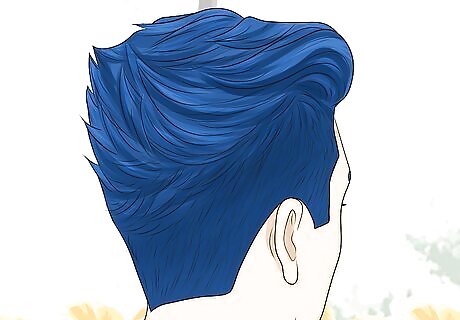
Dyeing your hair won’t turn it gray prematurely. If you went through a phase of dyeing your hair back in the day, know that your stylish adventures won’t make your hair turn gray faster. Excessive dyeing and bleaching can damage your hair, but it can’t change its natural color permanently. Be aware that if your hair thins or falls out due to dyeing or bleaching, it may grow back a lighter pigment, depending on your age and genetics. However, this isn’t a direct result of the dye itself but a side effect of damaged hair.

Limiting sun exposure doesn’t reverse graying hair. Despite popular belief, the sun won’t automatically turn hair gray. While being in the sun for long periods of time can lightening or distress your hair, weakening the follicles, it won’t turn gray immediately—this is something that happens over a long period of time. Hair turns gray naturally due to the loss of melanin, not as a direct effect of the sun. Remember that excessive amounts of sun could damage your hair or cause a scalp sunburn. Always opt to wear a sun hat if you know you’ll be in sunny conditions for long periods of time.
Covering Hair When it Grays
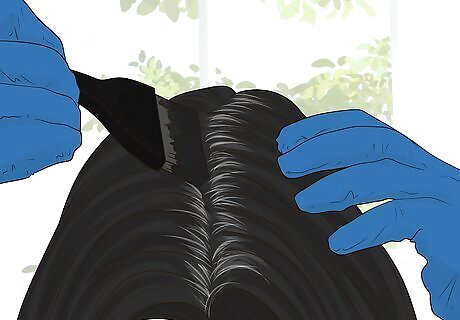
Use a hair root coverup for temporary coverage. When your roots are just starting to gray, powders, gels, and other products can temporarily mask the fading color. Choose a product that matches your hair color, and apply it to your roots following the directions on the package to cover your gray hair. These products typically last until your hair becomes wet from rain or a shower.

Dye your hair with permanent dye for full coverage. If you’re not a fan of your new gray look, you may consider dyeing it permanently. Unlike a root coverup product, permanent dye lasts longer and doesn’t wash out. This can be a perfect solution for those with large gray patches or who want to experiment with their aging appearance. Talk to your hairstylist about available options and what you’re looking for. They’ll be able to give you personalized advice for your hair. Keep in mind that permanent dye jobs still need routine touchups; otherwise, you’ll be rocking gray roots as your hair grows out.

Embrace your graying hair by going natural. Many women and men are going gray and welcoming their golden years. If the maintenance of hiding your grays is too much work, let it grow out. Gray hair can be just as eye-catching as any other color! Keep your gray hair looking bright and healthy with shampoos and conditioners specifically designed for gray or white hair.


















Comments
0 comment